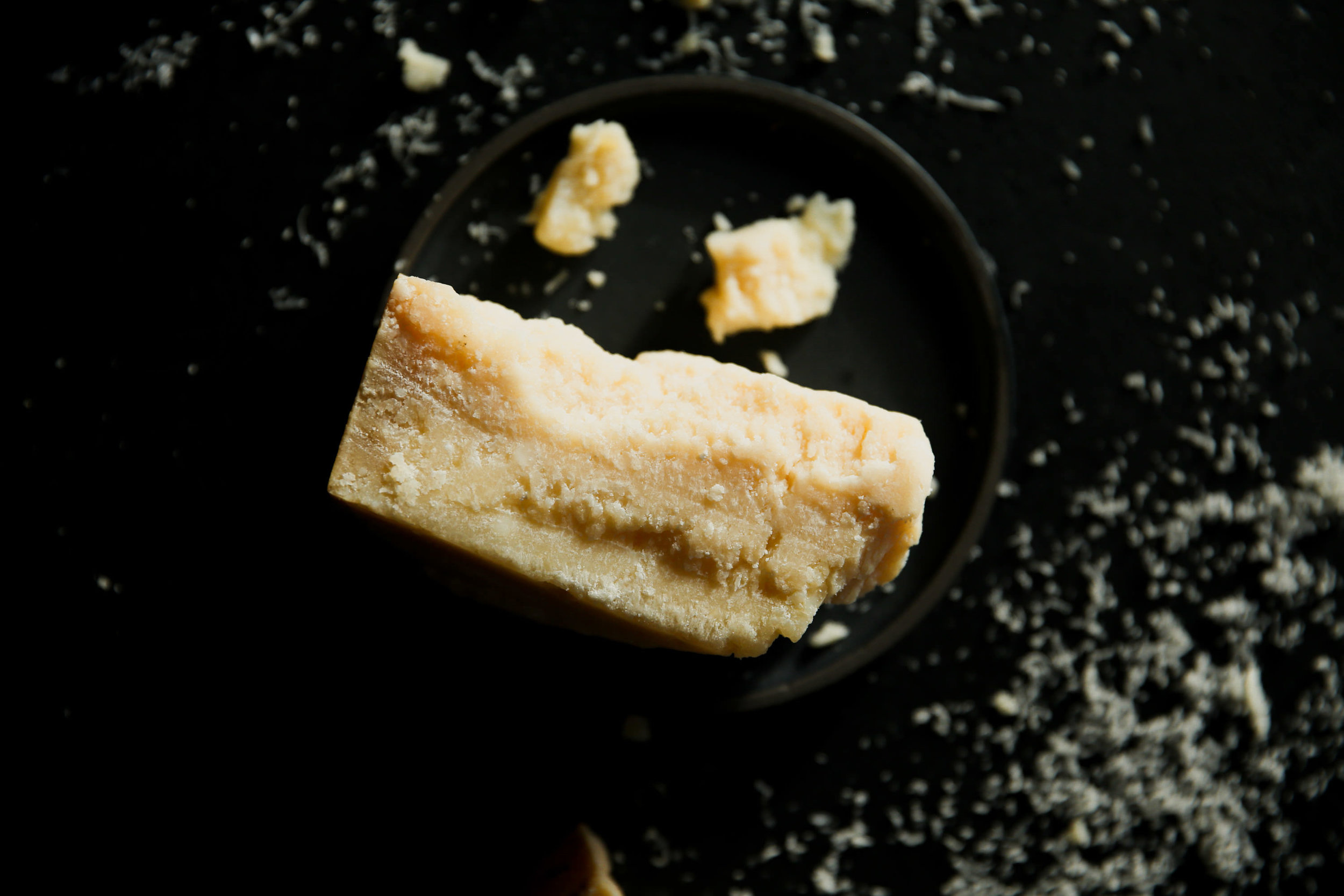Everyday Uses For Parmesan Rinds
A fun fact about me (and maybe you can relate): I LOVE cheese, parmesan especially. When I was a kid, one of my favorite comfort foods was buttered pasta with parmesan. And to this day, when I’m sick, getting over a cold or just plain lazy and craving some carbs, it’s still my go-to dish.
But there are many reasons to love parmesan besides the obvious. Just think about how versatile it is:
It’s a great garnish for pasta, salad and eggs.
It adds flavor & binding ability when mixed into burger meat.
It can become its own pasta sauce when mixed with a little pasta water, egg and seasoning.
You can throw it on a cheese plate with some olives and jam.
It’s great biscuit or pizza dough.
You can mix it with melted butter, bread crumbs and herbs for a killer casserole topping.
But for years I shopped for the right piece of part by looking for the chunk with the least rind, wanting the most bang for my buck. That was the absolute wrong way to go about it. And today I’m going to be telling you why.
Why You Should Be Using Parmesan Cheese Rinds
[1] They’re packed with flavor
Did you know that the rind has the most concentration of flavor? The down side is that the rind is practically inedible due to its hard texture. But fear not! I’ll be sharing some easy ways to extract all of that flavor in every day dishes.
[2] Using Parmesan Rinds reduces waste
Let’s be honest: cheese can be dang expensive and if you buy parmesan that doesn’t come in a can you know what I’m talking about. When you pay for parmesan by the pound, throwing away a chunk of heavy rind is like throwing away money. So the solution is easy: don’t!
[3] They are Easy to store
If you don’t have an immediate use for your leftover parmesan rinds, have no fear! The good news is you can store them in an air-tight container in your freezer for months. Chunk it in with any kitchen scraps you’re saving for your next broth. I love saving mushroom stems, potato peels, the tops of celery, onion skins and garlic skins.
[4] They help you layer flavors
The best chefs consider their ingredients and how they can be layered and combined at different stages of the dish to build flavor. If you want a parmesan flavor that is truly infused in a dish, you have to think of the way it is incorporated: it isn’t enough to just sprinkle it on top of at the end, although that is certainly delicious.
Like in this minestrone recipe, a parmesan rind like I outline below truly helps to bring out its robust flavor in a dish because the ingredient is being used at varying stages of cooking.
Pro TIP
Did you know that you can buy rinds at whole foods? If you’re looking for just the rind, you can find them with the rest of the parmesan cheese, packaged separately. You can also ask for them specifically at any cheese counter.
Everyday Ways to use Parmesan Rinds
1 For Soups, Stews & Broth
There is hardly a soup or broth recipe I can think of that wouldn’t benefit from the flavor & umami of a parmesan rind. You don’t have to do anything special, just toss the rind in with a batch of minestrone, homemade broth, or savory stew and let it simmer away, imparting it’s salty, flavorful essence.
2 Infusing Olive Oil
This may be my favorite tip that I discovered. Add a bit of parmesan rind and a couple of cloves of garlic to a glass jar, fill it with a good quality olive oil and let it sit and infuse to use on crusty breads and dressings.
3 Giving Extra Flavor To Pasta or Pizza Sauce
The next time you’re making tomato-based sauce for pasta or pizza, throw in a two-inch hunk of parmesan rind while you simmer it and pull it out before topping on your pasta. It adds an extra layer of parm flavor that can’t be replicated by just topping the dish.
4 As a Little Extra Flavor for Braising Liquid
Next time you’re braising a cut of meat, consider throwing it into the braising liquid for added flavor.
5 Layering Flavor in Risotto
Add in a hunk when you begin to add your broth, stirring it throughout the liquid adding process, then pull it out before serving. This layers that parmesan flavor all throughout the dish.
6 Adding “Umph” to Steamed Veggies
Next time you’re preparing a steaming basket with broccoli, cauliflower, carrots, artichokes or green beans, throw a bit of rind in there too with a sprig of rosemary.
7 To Simmered Beans
This is particularly delicious when added in with white / great northern beans, but can also be added in with pinto, black, or garbanzo.
Conclusion
We should all be thinking about ways that we can reduce our wasteful mindsets. One of my favorite quotes that I’ve seen recently is:
“We do not need a few people doing reducing waste perfectly. We need a lot of people reducing waste imperfectly.”
How true is that? Saving your parmesan rinds for future use may seem inconsequential, but what I want this to get you thinking about is how you use the ingredients in your kitchen. Something as inconsequential as a parmesan rind can be repurposed in an amazing way.
What else have you been tossing that you can put to good use? I hope after you read this post you go about your day with a renewed mindset and thoughtful approach to how you use the ingredients in your kitchen.












Beets are an under utilized vegetable and their greens fly even more under the radar. This recipe makes their greens a shining star with a slow sauté, punch of spice and dash of lemon.